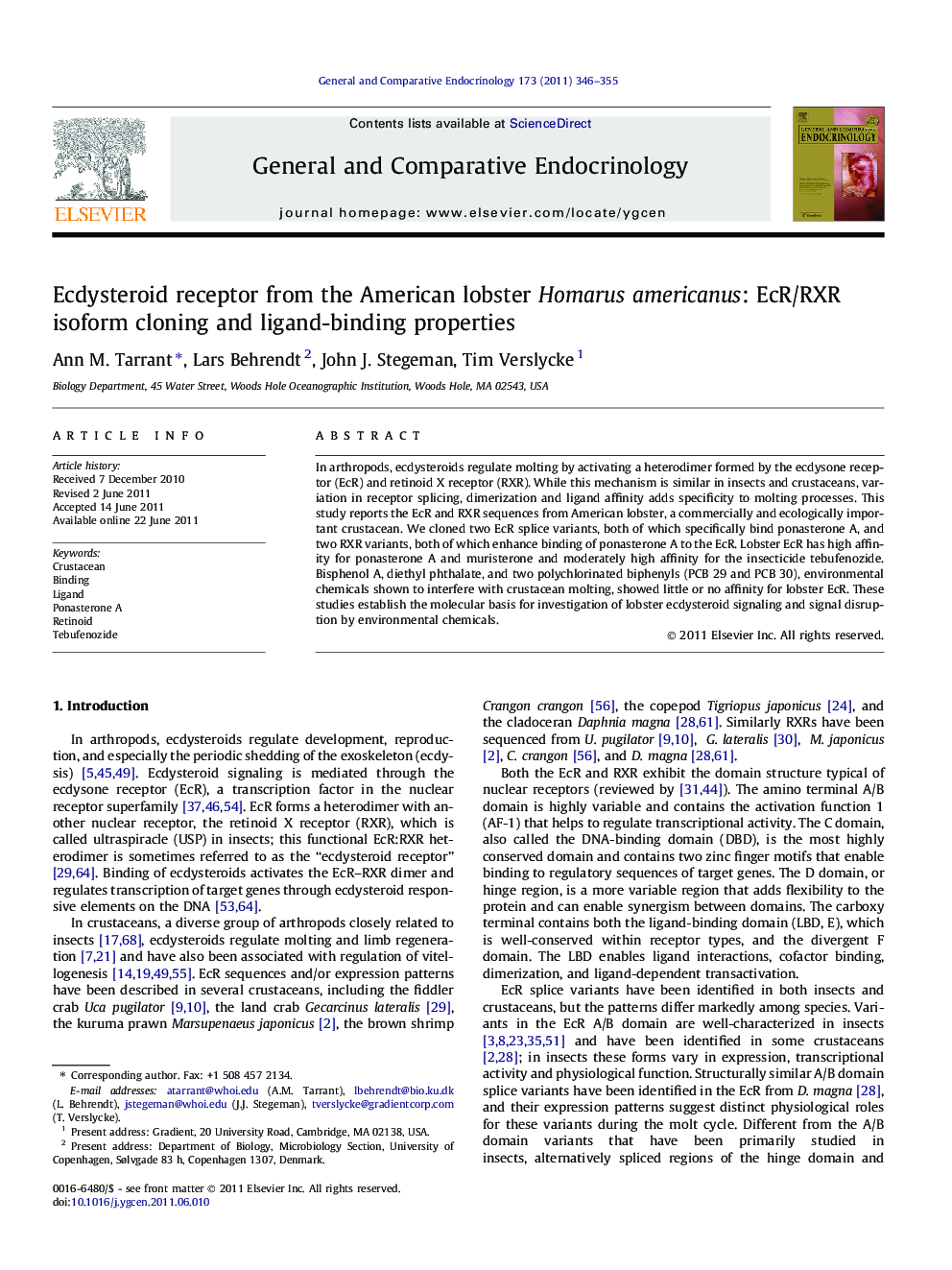| Article ID | Journal | Published Year | Pages | File Type |
|---|---|---|---|---|
| 2800745 | General and Comparative Endocrinology | 2011 | 10 Pages |
In arthropods, ecdysteroids regulate molting by activating a heterodimer formed by the ecdysone receptor (EcR) and retinoid X receptor (RXR). While this mechanism is similar in insects and crustaceans, variation in receptor splicing, dimerization and ligand affinity adds specificity to molting processes. This study reports the EcR and RXR sequences from American lobster, a commercially and ecologically important crustacean. We cloned two EcR splice variants, both of which specifically bind ponasterone A, and two RXR variants, both of which enhance binding of ponasterone A to the EcR. Lobster EcR has high affinity for ponasterone A and muristerone and moderately high affinity for the insecticide tebufenozide. Bisphenol A, diethyl phthalate, and two polychlorinated biphenyls (PCB 29 and PCB 30), environmental chemicals shown to interfere with crustacean molting, showed little or no affinity for lobster EcR. These studies establish the molecular basis for investigation of lobster ecdysteroid signaling and signal disruption by environmental chemicals.
► We cloned two ecdysone receptor (EcR) splice variants from American lobster. ► Both EcR variants specifically bind ponasterone A. ► We cloned two retinoid X receptor (RXR) variants, both of which enhance ponasterone A binding to EcR. ► Lobster ecdysteroid receptor has high affinity for ponasterone A, muristerone and tebufenozide.
